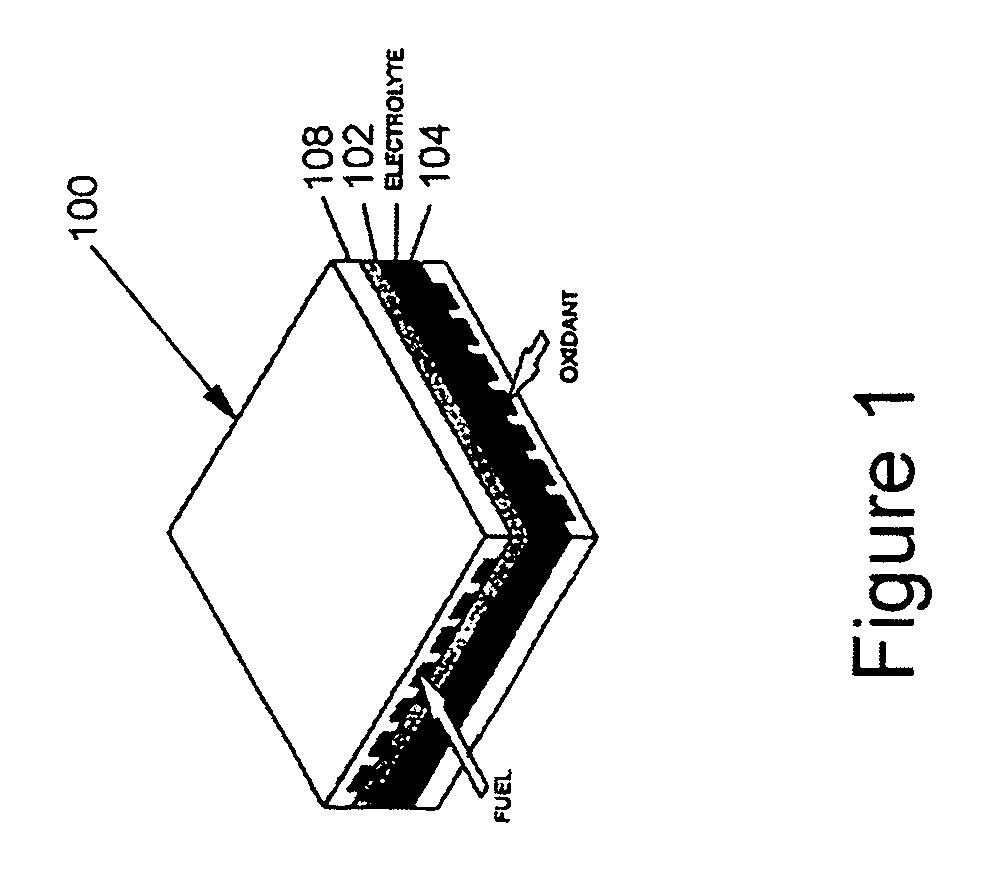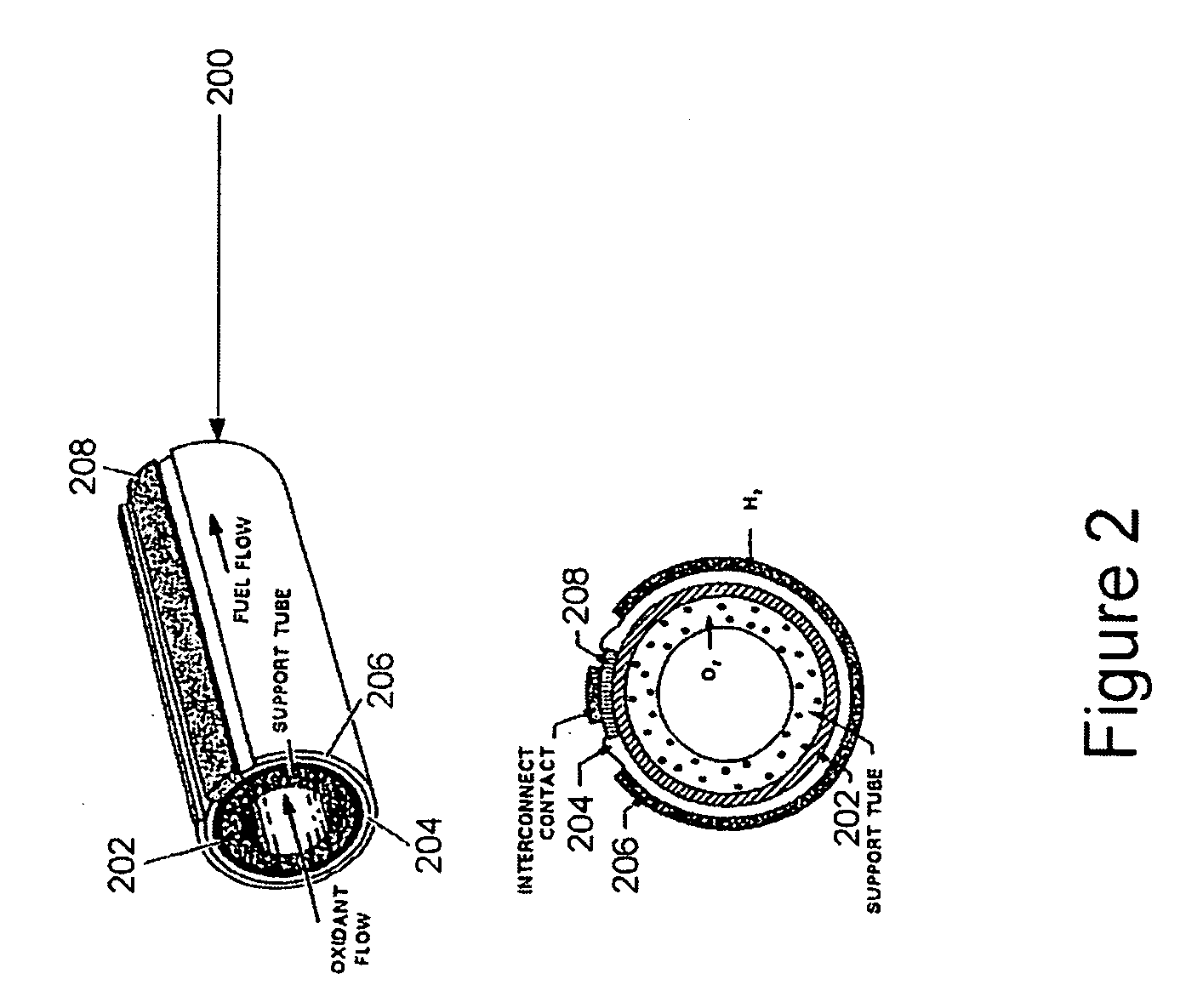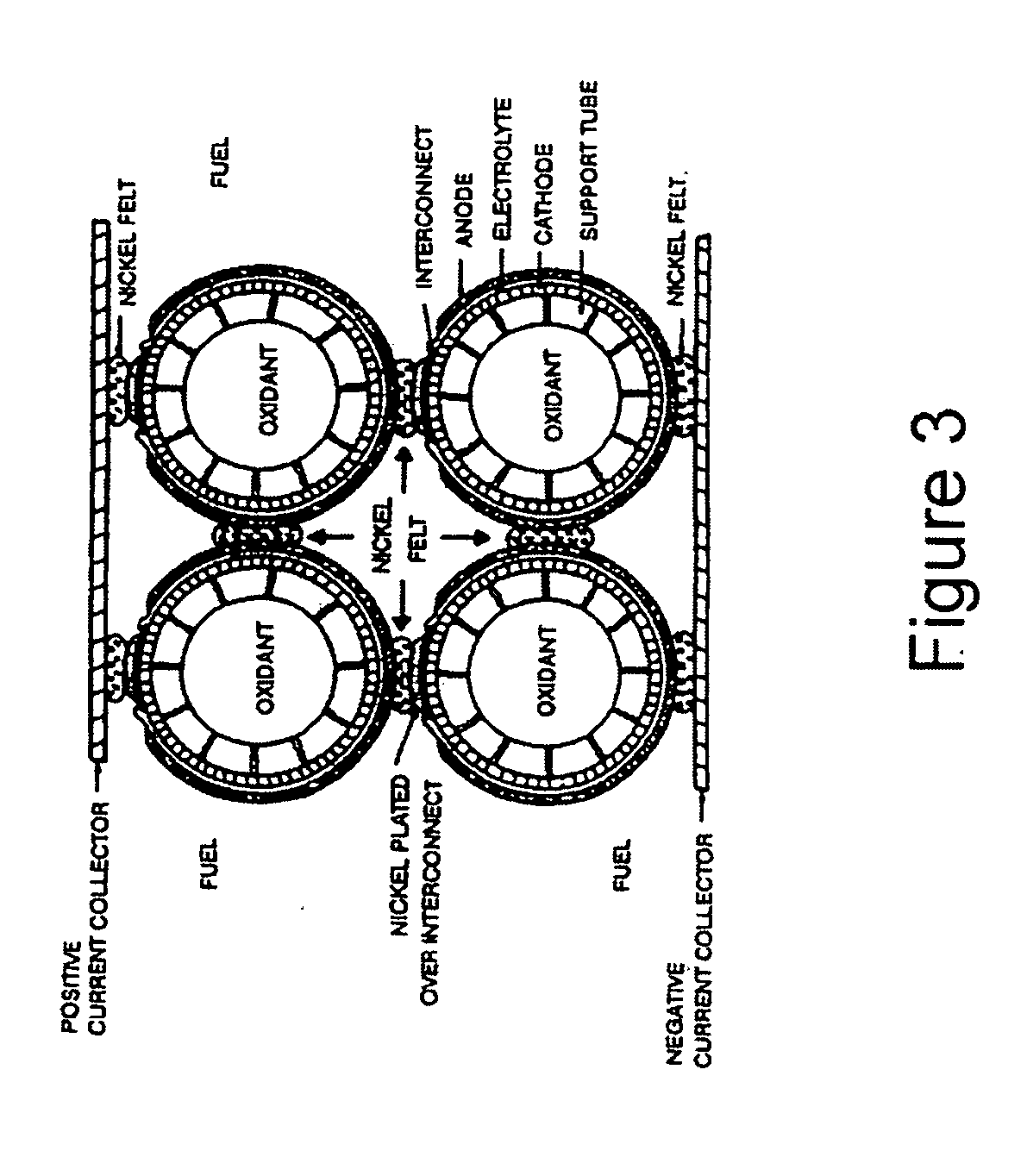Tubular solid oxide fuel cells
a fuel cell and tubular technology, applied in the field of solid electrolyte electrochemical cells, can solve the problems of low power output, brittleness and difficult machine, and brittleness of ceramic plates, so as to achieve low electrical resistance, strong electrical contact, and low cost.
- Summary
- Abstract
- Description
- Claims
- Application Information
AI Technical Summary
Benefits of technology
Problems solved by technology
Method used
Image
Examples
Embodiment Construction
[0043] The present invention provides a tubular anode-supported fuel cell that has a higher power density and enhanced mechanical strength over a prior art planar fuel cell. The present invention further provides a flexible, lightweight, and economical electrical interconnect components for interconnecting anode-supported fuel cell.
[0044]FIG. 4 shows an anode-supported SOFC 400, in accordance with one embodiment of the present invention. As shown in FIG. 4, SOFC 400 includes porous support tube 402, which may be between 0.1 to 4 mm thick (more preferably between 0.5 to 2 mm thick) and between ¼ inch to 1 inch in diameter (preferably between ¼ to {fraction (3 / 4)} inch). A smaller diameter shortens the current path and thus reduces ohmic resistance loss. Support tube 402 may be made from a wide variety of materials, including alumina, doped-zirconia, doped lanthanum chromite. To minimize the ohmic loss due to electrical conduction along the circumference of the tube, the tube materia...
PUM
 Login to View More
Login to View More Abstract
Description
Claims
Application Information
 Login to View More
Login to View More - R&D
- Intellectual Property
- Life Sciences
- Materials
- Tech Scout
- Unparalleled Data Quality
- Higher Quality Content
- 60% Fewer Hallucinations
Browse by: Latest US Patents, China's latest patents, Technical Efficacy Thesaurus, Application Domain, Technology Topic, Popular Technical Reports.
© 2025 PatSnap. All rights reserved.Legal|Privacy policy|Modern Slavery Act Transparency Statement|Sitemap|About US| Contact US: help@patsnap.com



